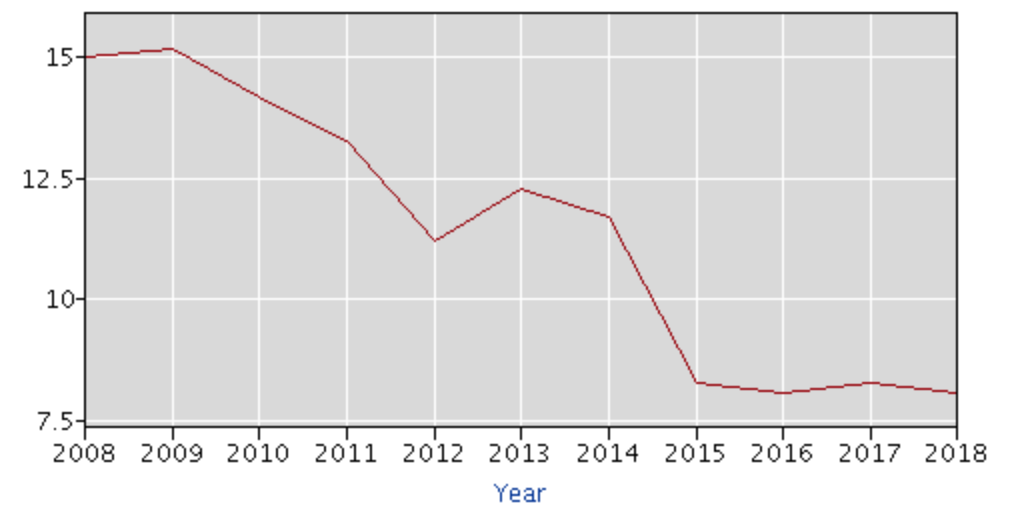
After the Passage of Act 10 and Right to Work Laws, Union Membership Falls From 13.3 Percent to Just 8.1
January 25, 2018
By Abby Streu
On January 18, the Bureau of Labor Statistics from the US Department of Labor released its 2018 union membership numbers. Wisconsin has seen a decrease over the past year in the percentage of union memberships.
In 2017, there were 2.8 million people in the workforce in Wisconsin. Of that 2.8 million, 230,000, or 8.3 percent, were in a union. In 2018, the number of employed people in the workforce dropped to 2.7 million. Of that, 219,000 workers were union members, or 8.1 percent.
In 2015, 8.3 percent of workers were in a union, and 8.1 percent in 2016, showing that this rate has slowed in the past few years. However, one decade ago, union membership accounted for 15 percent of the workforce.
The first major dip in union membership aligns with the passage of Act 10 in 2011, giving most public employees the right to disaffiliate with their unions. In 2015, another substantial dip aligns with the passage of Right to Work, suggesting that union members may choose to take their livelihood into their own hands, rather than rely on the collective.

At this time last year, MacIver reported an influx of blue-collar jobs in the state, and suggested that an overall downward trend of union membership might end because of it. This new data from BLS may dispute that idea.
In addition to a decrease in membership, there was a decrease in the percentage of workers who did not affiliate with a union, but were still being represented by a union. Unions often complain that Right to Work and Act 10 caused “free riders,” or people who don’t pay union dues, but benefit from collective bargaining.
In 2017, 9 percent of workers were represented by unions, which fell to 8.6 percent in 2018. Over the past decade, this percentage has dropped from 16 percent in 2008.